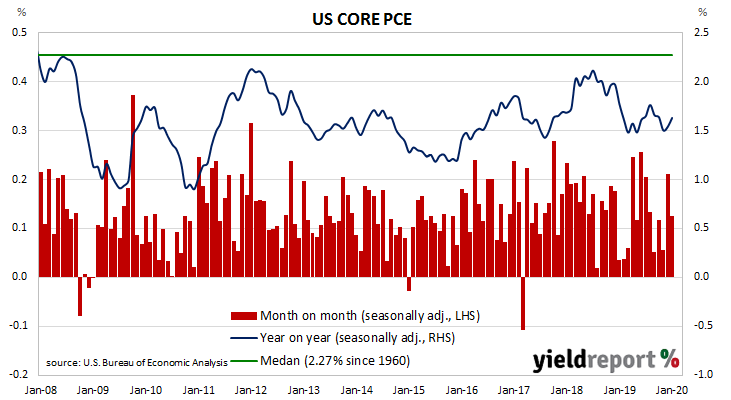One of the US Fed’s favoured measures of inflation is the change in the core personal consumption expenditures (PCE) price index. After hitting the Fed’s target at 2.0% in mid-2018, the annual rate then hovered in a range between 1.8% and 2.0% through to the end of 2018 before dropping in the first quarter of 2019 to around 1.5%. It has ranged between 1.5% and 1.8% since then.
The latest figures have now been published by the Bureau of Economic Analysis as part of the January personal income and expenditures report. Core PCE prices increased by 0.1% for the month, below the +0.2% increase which had been expected and below December’s 0.2% increase. However, on a 12-month basis, the core PCE inflation rate ticked up from 1.5% to 1.6%.
US Treasury yields finished considerably lower as equity markets sold off amid COVID-19 fears and investors switched to lower-risk assets. By the end of the day, the 2-year Treasury yield had plunged 14bps to 0.92%, the 10-year yield had dropped by 11bps to 1.15% while 30-year yields finished 8bps lower at 1.68%.
In terms of likely US monetary policy, according to federal funds futures contracts the likelihood of another official rate cut jumped dramatically, although the change was not really linked to the report. The probability of a 25bps cut at the March meeting of the FOMC increased from 58% to being fully priced in. Another cut later in the year also became much more likely according to prices of federal funds futures at the end of the day.

